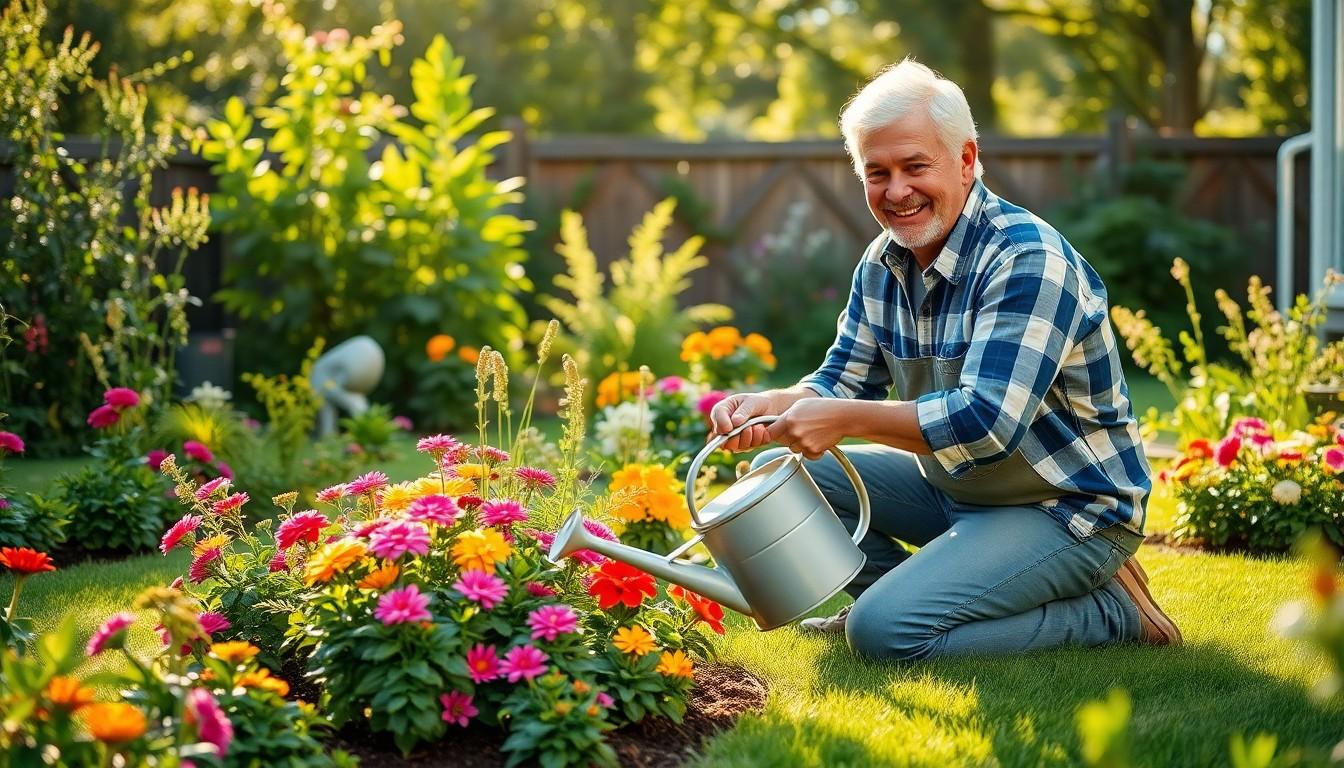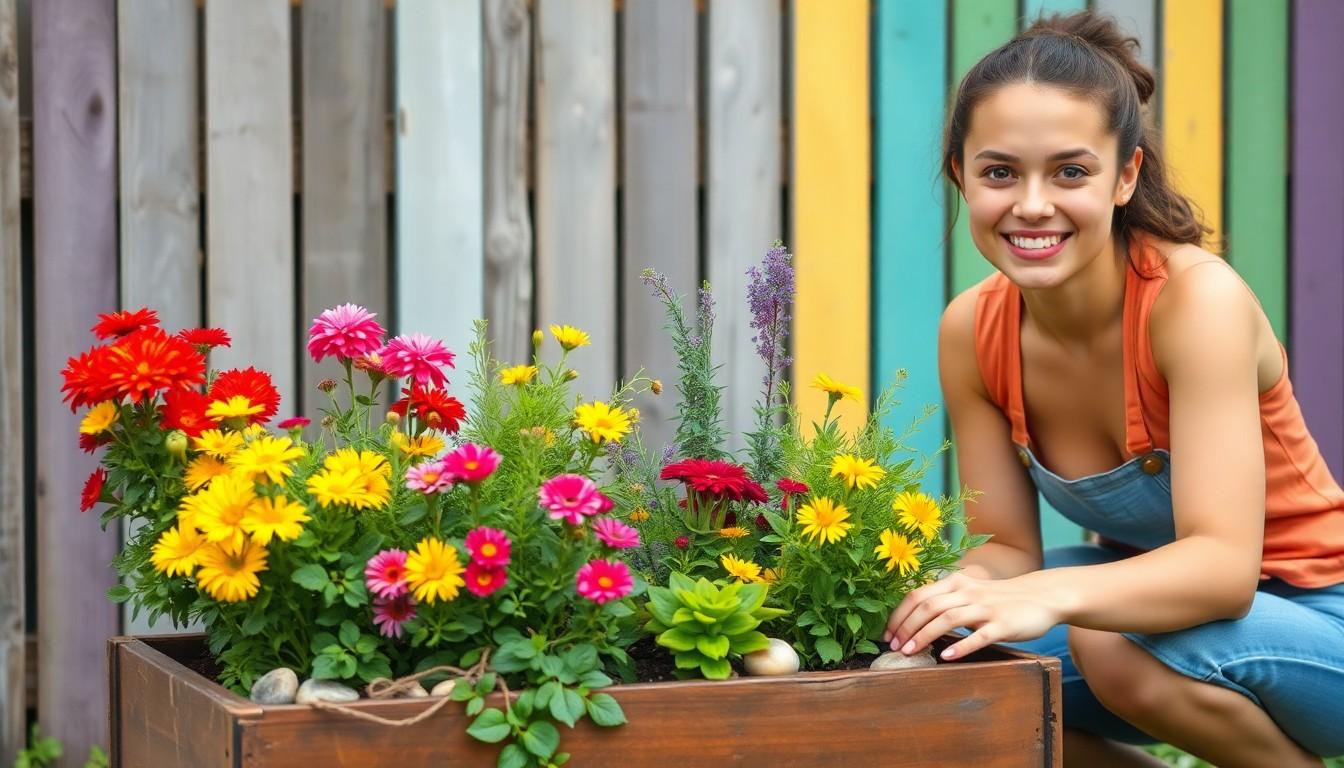In a world where concrete jungles reign supreme, creative gardening offers a refreshing escape into nature’s embrace. It’s not just about planting a few flowers and hoping for the best; it’s an art form that invites imagination to take root. Whether it’s transforming an old shoe into a quirky planter or turning a neglected corner of the yard into a vibrant oasis, the possibilities are endless—and often hilarious!
Creative Gardening
Creative gardening transforms outdoor and indoor spaces into unique ecosystems filled with imagination. It involves rethinking conventional gardening practices, allowing individuals to express personal aesthetics and design visions. Incorporating unexpected materials such as repurposed furniture or unusual containers can yield eye-catching displays.
One common approach includes vertical gardening, where plants are trained to grow upward, maximizing limited space. This method showcases creativity while providing practical solutions for urban dwellers. Using old pallets or wire grids promotes green art, transforming bare walls into vibrant plant canvases.
Innovative techniques extend to incorporating edible plants in ornamental gardens. By mixing vegetables with flowers, gardeners create picturesque yet functional environments. This concept enhances home aesthetics and promotes sustainable living.
Beyond aesthetics, creative gardening often focuses on environmental impact. Utilizing native plants supports local wildlife and reduces water usage. Rainwater collection systems can further enhance sustainability by creating self-sufficient gardens.
Humor also plays a role in creative gardening. Playful elements such as garden gnomes or whimsical sculptures add a layer of personalization. Combining humor with artistic expression stimulates joy in gardening while inviting conversation among visitors.
Ultimately, creative gardening fosters community engagement. Shared gardening spaces encourage collaboration among neighbors, promoting social bonds. Through innovative practices, individuals contribute to a collective appreciation for nature’s beauty, reinforcing the notion that gardening serves both personal and communal purposes.
Benefits of Creative Gardening

Creative gardening promotes numerous advantages that enhance well-being and support the environment.
Mental Health Benefits
Engaging in creative gardening contributes significantly to mental health. Participants experience reduced stress levels through hands-on activities. Cultivating plants encourages mindfulness, allowing individuals to focus on the present moment. Interaction with nature fosters a sense of tranquility and promotes overall happiness. Numerous studies indicate that gardening can decrease symptoms of anxiety and depression. These benefits combine to encourage a healthier and more balanced lifestyle.
Environmental Benefits
Creative gardening positively impacts the environment through various sustainable practices. Utilizing native plants supports local ecosystems, promoting biodiversity. Rainwater collection systems conserve water resources effectively. Repurposing materials reduces waste and promotes recycling efforts. Implementing vertical gardens maximizes space and improves air quality. These practices collectively contribute to the creation of eco-friendly habitats. Engaging in creative gardening instills a sense of responsibility, encouraging individuals to care for their local environments.
Techniques for Creative Gardening
Creative gardening techniques promote innovative expressions of personal style. Two popular methods include vertical gardening and container gardening.
Vertical Gardening
Vertical gardening maximizes limited space and transforms walls into lush green canvases. This method uses structures like trellises and wall-mounted planters. Climbing plants such as cucumbers and sweet peas thrive in these spaces. Vertical gardens also improve air quality by filtering pollutants. They offer a striking visual impact, attracting attention in any environment.
Container Gardening
Container gardening provides flexibility for gardening enthusiasts. A wide variety of materials, such as ceramic pots and recycled containers, enhance creativity. Plants like herbs, flowers, and small vegetables flourish in containers. This technique allows urban gardeners to rearrange their layout easily. Container systems promote drainage and can be tailored to individual needs, creating unique focal points in any garden.
Inspiring Creative Gardening Ideas
Creative gardening incorporates elements that go beyond traditional planting. It invites individuals to think outside the box, transforming spaces into living art.
Incorporating Art and Sculptures
Art and sculptures enhance garden aesthetics while providing focal points. Statues can reflect personal style, ranging from classical figures to modern abstracts. Garden art, such as metal or glass pieces, draws attention while interacting with light. Integrating local artists’ work promotes community engagement, creating a unique atmosphere. Additionally, painting wooden fences with vibrant colors leverages the backdrop, transforming ordinary spaces. Arranging sculptures among plants adds layers, making the garden feel more dynamic and alive.
Using Unconventional Materials
Unconventional materials bring uniqueness to gardens. Repurposed items like old wheelbarrows or bathtubs become creative planters, emphasizing sustainability. Aside from furniture, consider using pallets to create vertical gardens or seating areas. Items like wine bottles or cans can form borders or pathways, serving both decorative and practical purposes. Stacked stones or logs add rustic charm while creating habitats for wildlife. Combining these elements cultivates a garden that reflects individuality and inspires others to think creatively.
Creative Gardening for Small Spaces
Creative gardening for small spaces encourages innovative solutions. Vertical gardening maximizes limited areas by utilizing walls. Climbing plants like ivy or tomatoes thrive on trellises, creating lush green visuals. Container gardening allows flexibility and easy movement, making it ideal for patios and balconies. A variety of materials, including old buckets or ceramic pots, can serve as unique planters.
Raised garden beds can fit snugly into corners, providing structure while promoting growth. Fruits and vegetables such as lettuce or strawberries can flourish within these areas. Window boxes attached to railings add floral touches without taking up ground space. Herbs like basil and parsley thrive well in smaller, confined areas, integrating functionality into aesthetics.
Repurposed furniture brings charm to small gardens. Old ladders, for example, can elevate plants for added interest. Using items like tin cans or wooden crates as planters can enhance creativity. The integration of artistic elements, such as colorful mosaics or sculptures, elevates the garden’s character.
Community gardens offer collaboration opportunities for those with limited space. Engaging with neighbors fosters a sense of belonging while creating beautiful environments. Emphasizing native plants supports local wildlife, enhancing biodiversity in compact areas. Additionally, rainwater collection systems can optimize water usage in these gardens.
Creative gardening not only transforms spaces but also enriches lives. Embracing sustainable practices reduces waste and promotes responsibility. Individuals find joy in nurturing plants, contributing to both personal happiness and environmental well-being. Creativity in small gardening spaces cultivates unique, vibrant environments that inspire others.
The Art Of Gardening
Creative gardening opens up a world of possibilities that go beyond traditional practices. It allows individuals to express their unique styles while cultivating vibrant spaces that bring joy and tranquility. By embracing innovative ideas and sustainable techniques, anyone can transform their environment into a personal sanctuary.
This approach not only enhances individual well-being but also fosters community connections. Engaging with neighbors in creative gardening projects can lead to shared experiences and a stronger sense of belonging. As more people explore the art of gardening, they contribute to a greener planet and inspire others to join in.
Ultimately, creative gardening is a celebration of imagination and sustainability, enriching lives one garden at a time.

